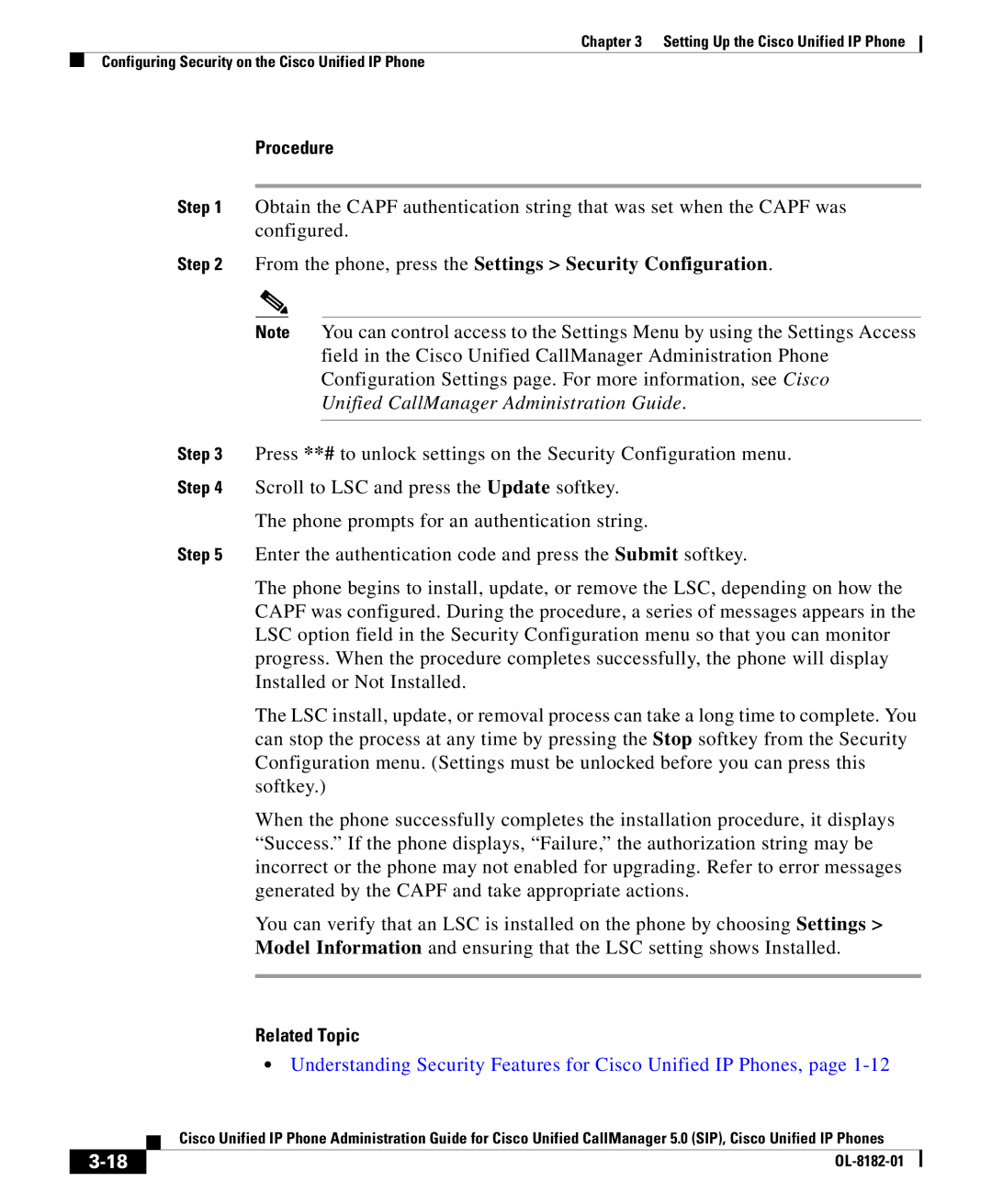
Chapter 3 Setting Up the Cisco Unified IP Phone
Configuring Security on the Cisco Unified IP Phone
Procedure
Step 1 Obtain the CAPF authentication string that was set when the CAPF was configured.
Step 2 From the phone, press the Settings > Security Configuration.
Note You can control access to the Settings Menu by using the Settings Access field in the Cisco Unified CallManager Administration Phone Configuration Settings page. For more information, see Cisco Unified CallManager Administration Guide.
Step 3 Press **# to unlock settings on the Security Configuration menu.
Step 4 Scroll to LSC and press the Update softkey.
The phone prompts for an authentication string.
Step 5 Enter the authentication code and press the Submit softkey.
The phone begins to install, update, or remove the LSC, depending on how the CAPF was configured. During the procedure, a series of messages appears in the LSC option field in the Security Configuration menu so that you can monitor progress. When the procedure completes successfully, the phone will display Installed or Not Installed.
The LSC install, update, or removal process can take a long time to complete. You can stop the process at any time by pressing the Stop softkey from the Security Configuration menu. (Settings must be unlocked before you can press this softkey.)
When the phone successfully completes the installation procedure, it displays “Success.” If the phone displays, “Failure,” the authorization string may be incorrect or the phone may not enabled for upgrading. Refer to error messages generated by the CAPF and take appropriate actions.
You can verify that an LSC is installed on the phone by choosing Settings >
Model Information and ensuring that the LSC setting shows Installed.
Related Topic
•Understanding Security Features for Cisco Unified IP Phones, page
| Cisco Unified IP Phone Administration Guide for Cisco Unified CallManager 5.0 (SIP), Cisco Unified IP Phones |
